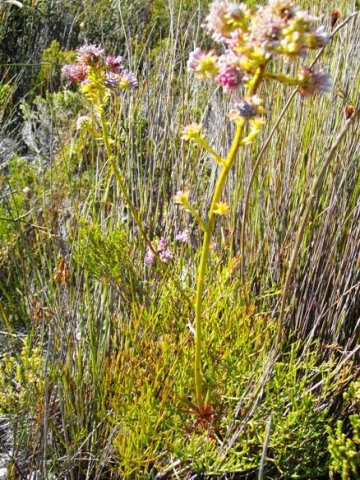Serruria elongata is threatened

Author: Ivan Lätti
Photographer: Thabo Maphisa
Serruria elongata is listed as near threatened on the Red Data List early in the twenty first century, its population decreasing. More fires than nature needs, human development that encroaches on wildlife habitat domains and poor people behaviour patterns usually are the main reasons why plants and animals appear on these lists; ominous, count-down heralds of diversity destruction. Serruria as a genus grows mainly in lowlands, making the plants susceptible to agriculture and urban development.
The South African endemic Serruria genus is one of the Western Cape Proteaceae and fynbos treasures, comprising about 50 species. Their leaves are typically divided into needle-like cylindrical segments, the flower-heads often embedded among the leaves at stem tips. In other species, like this one the flowers are pushed out on top of long flower stalks. There are other creeping species where the flowerheads are on the ground next to the leaves (www.proteaatlas.org.za).

